14-24mm F2.8
DG DN
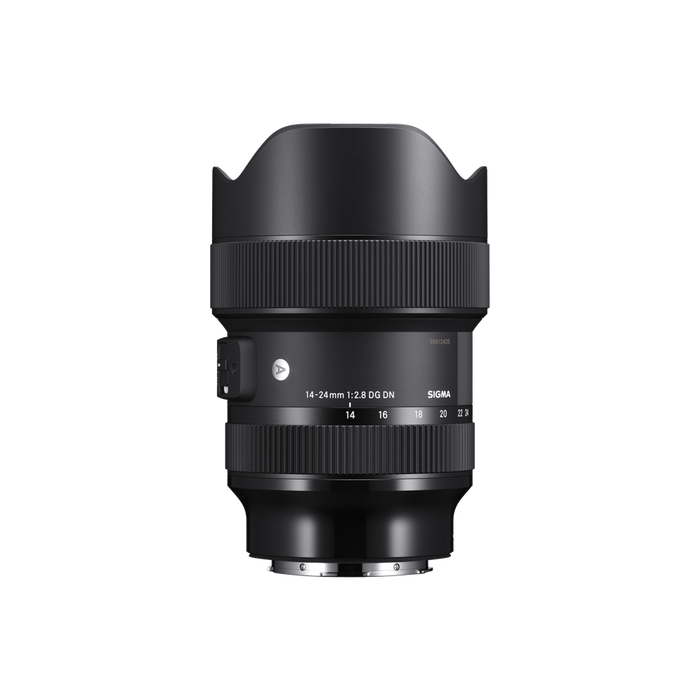

- Unprecedented high-resolution image quality
- Uniform rendering performance to the edges
- Features exclusive low dispersion glass elements
- Stepping motor for high speed, quiet AF
- Dust and splash resistant structure
- Water and oil repellent coating
- Rear filter holder as a standard accessory
- NPC (Nano Porous Coating)
- Designed to minimize flare and ghosting
- Compatible with Lens Aberration Correction*
- Made in Japan
AWARDS
|
2020 |
|
|
EISA AWARD - BEST WIDE ANGLE ZOOM LENS |
2020-2021 |
| Angle of view | Wide Angle |
|---|---|
| Camera Type | Mirrorless |
| Lens Mount | L-mount, Sony E-mount |
| Sensor Size | Full Frame |
| Construction | 18 Elements in 13 Groups |
| Angle of view | 114.2° - 84.1° |
| Number of diaphragm blades | 11 (rounded diaphragm) |
| Minimum aperture | F22 |
| Minimum focusing distance | 28 cm |
| Maximum magnification ratio | 1:7.3 |
| Filter diameter | n/a |
| Dimensions (diameter x length) | L-mount ⌀ 85.0 mm × 131.0 mm |
| Weight (g) | L-mount 795 g |
| Edition number | A019 |
| Supplied Accessories | Cover Lens Cap LC850-01, Rear Cap LCR II, Case LS-588L |
| Accessories | USB-dock UD-11 (L-mount only) |
| EAN-code | L-mount 085126213695 |
| Specifications Info | * All figures calculated by L-Mount. Note: The L-Mount Trademark is a registered Trademark of Leica Camera AG. About Product Name: Product name includes "DG" when the lens is designed to deliver the ultimate in performance on cameras with full-frame sensors, and "DN" when the lens design is optimized for mirrorless cameras with the short flange focal length. |
High-resolution image quality developed with exclusive low dispersion glass elements and NPC(Nano Porous Coating)
One FLD glass and five SLD glass elements are appropriately arranged to suppress chromatic aberration to the edge of the frame. Three aspherical lenses, including a large-diameter aspherical lens at the foremost surface, are used to effectively minimize coma flare, etc., thereby achieving mind-blowing resolution.


Newly developed high-performance lens series for full-frame mirrorless cameras
With mirrorless cameras emerging at an accelerated pace, expectations towards lenses suited for high-performance full-frame mirrorless cameras are growing. Unfortunately, many photographers may feel that they have little choices for mirrorless lens systems in terms of performance, size, extensive lineup, and due to the burden of having to use multiple systems. Sigma has thus developed and proposes this new full-frame mirrorless lens series as the optimal solution to this challenge.
Sigma will develop interchangeable lenses with unprecedented specifications and performance by designs that benefit from the short flange focal length feature of mirrorless cameras while retaining the concepts of “Contemporary,” “Art,” and “Sports.” We will announce three models as the first lenses from this series.
Sigma’s unique coating technology Nano Porous Coating
The super multi-layer coating is combined with Sigma’s unique coating technology “NPC (Nano Porous Coating)”. The lens has been designed to be less susceptible to strong incident light such as backlight.
“NPC (Nano Porous Coating)” incorporates porous silica as the coating material. The porous silica layer has nano-sized holes with air inside. Having holes of this size enables a large reduction in the refractive index, allowing the reflectance to be lowered more than conventional anti-reflective coatings. As a result, reflected light causing flares and ghosting is sharply reduced, achieving clear image quality.
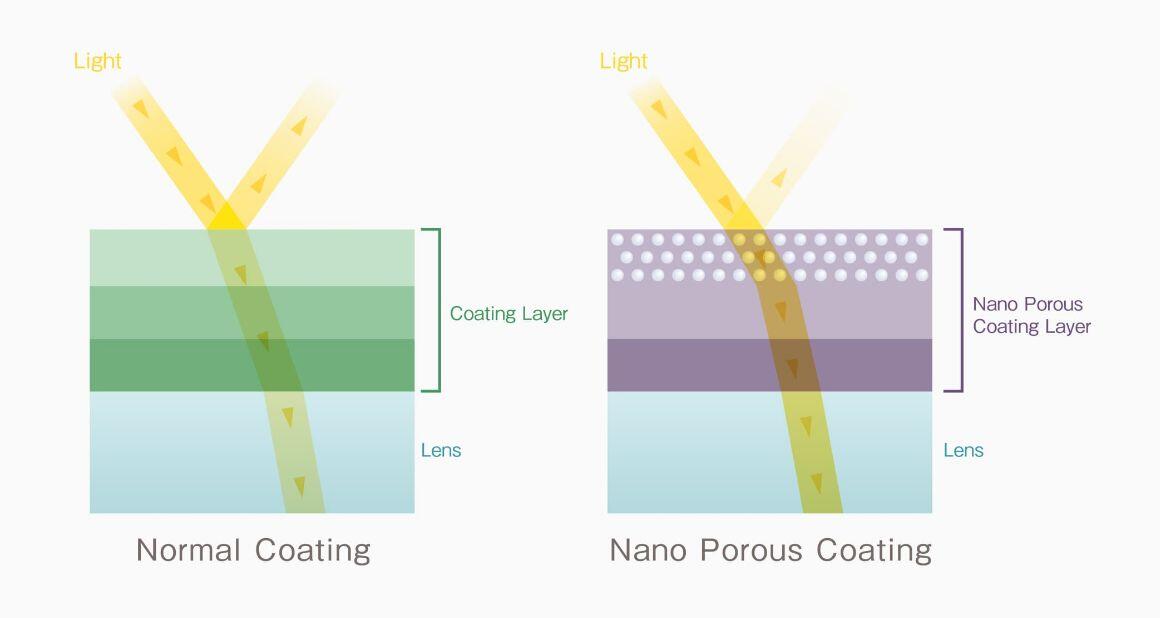

Substantial functions enable user confidence, even in tough environments
Incorporating a stepping motor enables the high speed, quiet AF drive. Shooting is comfortable even in target AF such as Face/Eye Detection AF and during video shooting. The 1 AFL button which can be assigned with various functions widens the range of operations available on the lens. Furthermore, the lens features a 2 dust and splash resistant structure along with a water- and oil-repellent coating on the frontmost surface of the lens, which further supports shooting in various environments.
*1 Function available on supported cameras only. Available corrections may vary depending on the camera model.
*2 Although this construction allows the lens to be used in light rain, it is not the same as being waterproof.
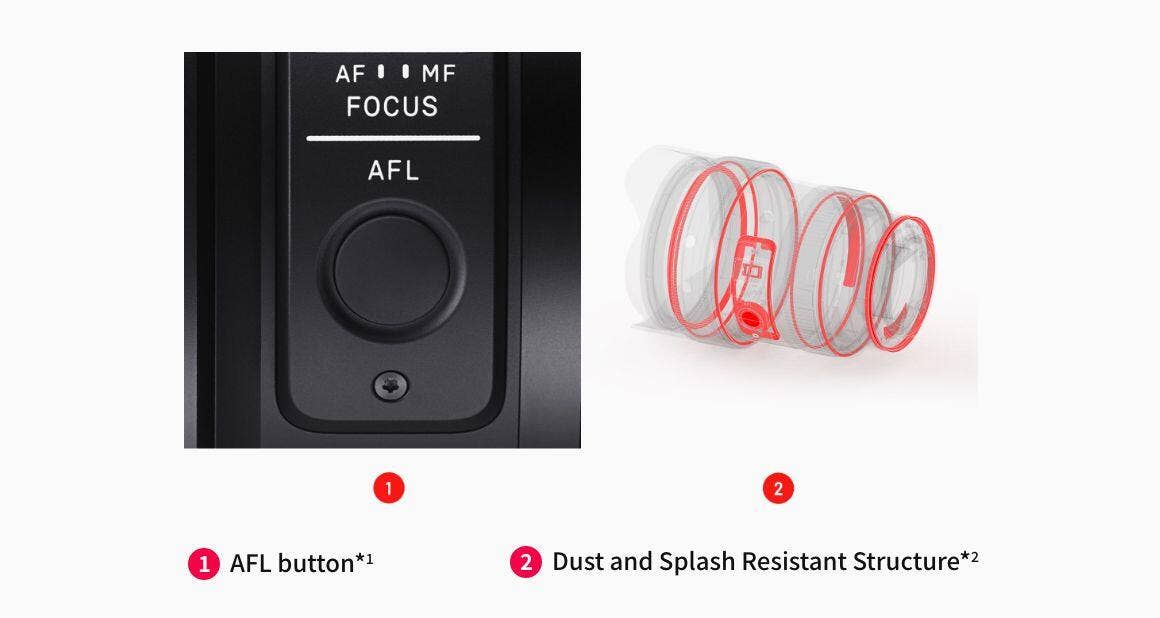

Rear filter holder as a standard accessory
The lens comes with a rear filter holder equipped with a fall prevention lock for attaching sheet type rear filters for shooting starry skies.


Designed to minimize flare and ghosting
From an early stage in the lens design process, flare and ghosting have been measured to establish an optical design resistant to strong incident light sources such as backlighting. Sigma’s Super Multi-Layer Coating reduces flare and ghosting to help photographers produce sharp and high contrast images even in backlit conditions.
Rounded diaphragm
The 11-blade rounded diaphragm creates an attractive blur in the out-of-focus areas of the image.
Compatible with Lens Aberration Correction
Matching the optical characteristics of the lens, this function performs in-camera corrections of peripheral illumination, chromatic aberrations, distortion, and more, to further enhance image quality.
Note:
・Function available on supported cameras only. Available corrections or auto correction functionality may vary depending on the camera model.
・On cameras where lens aberration correction is controlled with ‘ON’ or ‘OFF’ in the camera menu, please set all aberration correction functions to ‘ON’(AUTO).
High-precision,rugged brass bayonet mount
The brass mount combines high precision with rugged construction. Its treated surfaces and enhanced strength contribute to the exceptional durability of the lens.
LENS CONSTRUCTION
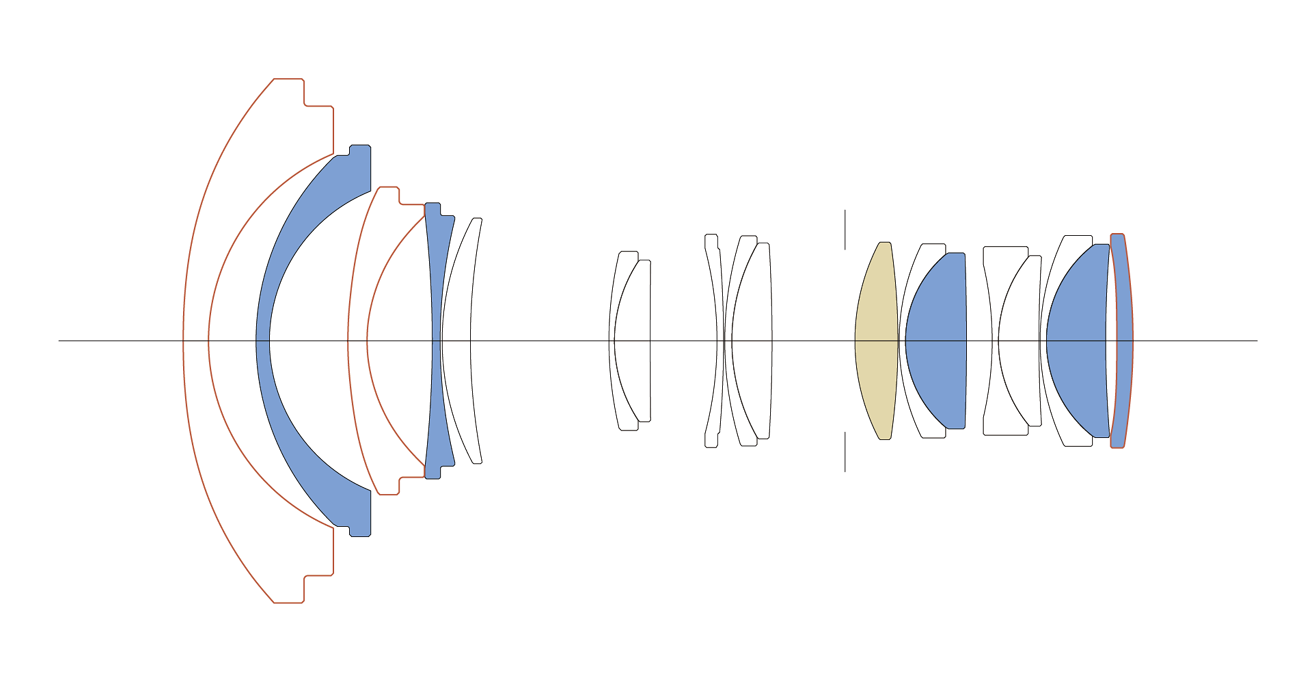

|
|
|
|
|
MTF CHART
There are two types of MTF chart. One considers the diffraction quality of light, which is called "Diffraction MTF", and the other, "Geometrical MTF" does not.
The quality of light appears in the diffracted light, and becomes more distinct as the F value gets bigger, resulting in lower image quality. Also, diffracted light exists at every aperture, which is why Sigma has been releasing Diffraction MTF data from the beginning since it is very close to the actual image data.
The advantage of using "Geometric MTF" data is that it is easy to measure and calculate since it does not consider the diffraction quality of light, yet it tends to show higher values in the graph than actual images.
The readings at 10 lines per millimeter measure the lens's contrast ability ( red lines), repeating fine parallel lines spaced at 30 lines per millimeter measure the lens's sharpness ability (green lines), when the aperture is wide open.
Fine repeating line sets are created parallel to a diagonal line running from corner to corner of the frame, are called Sagittal lines (S) and sets of repeating lines vertical to these lines are drawn, called Moridional (M) line sets.
*The MTF chart gives the result at the wide-open aperture.
|
Spatial frequency |
S:Sagittal Line |
M: Meridional Line |
|
10lp/mm |
|
|
|
30lp/mm |
|
|
DIFFRACTION MTF
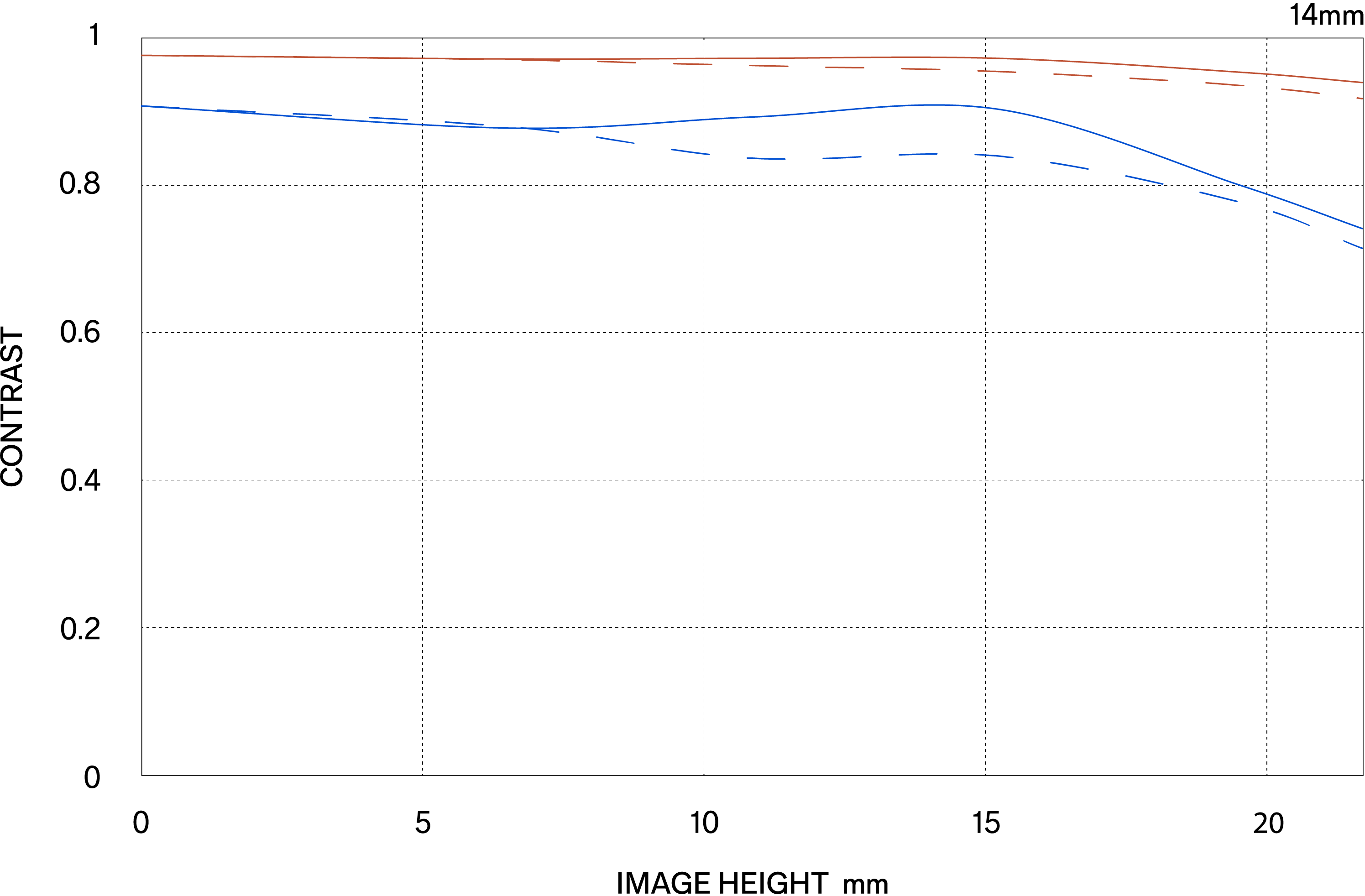

DIFFRACTION MTF
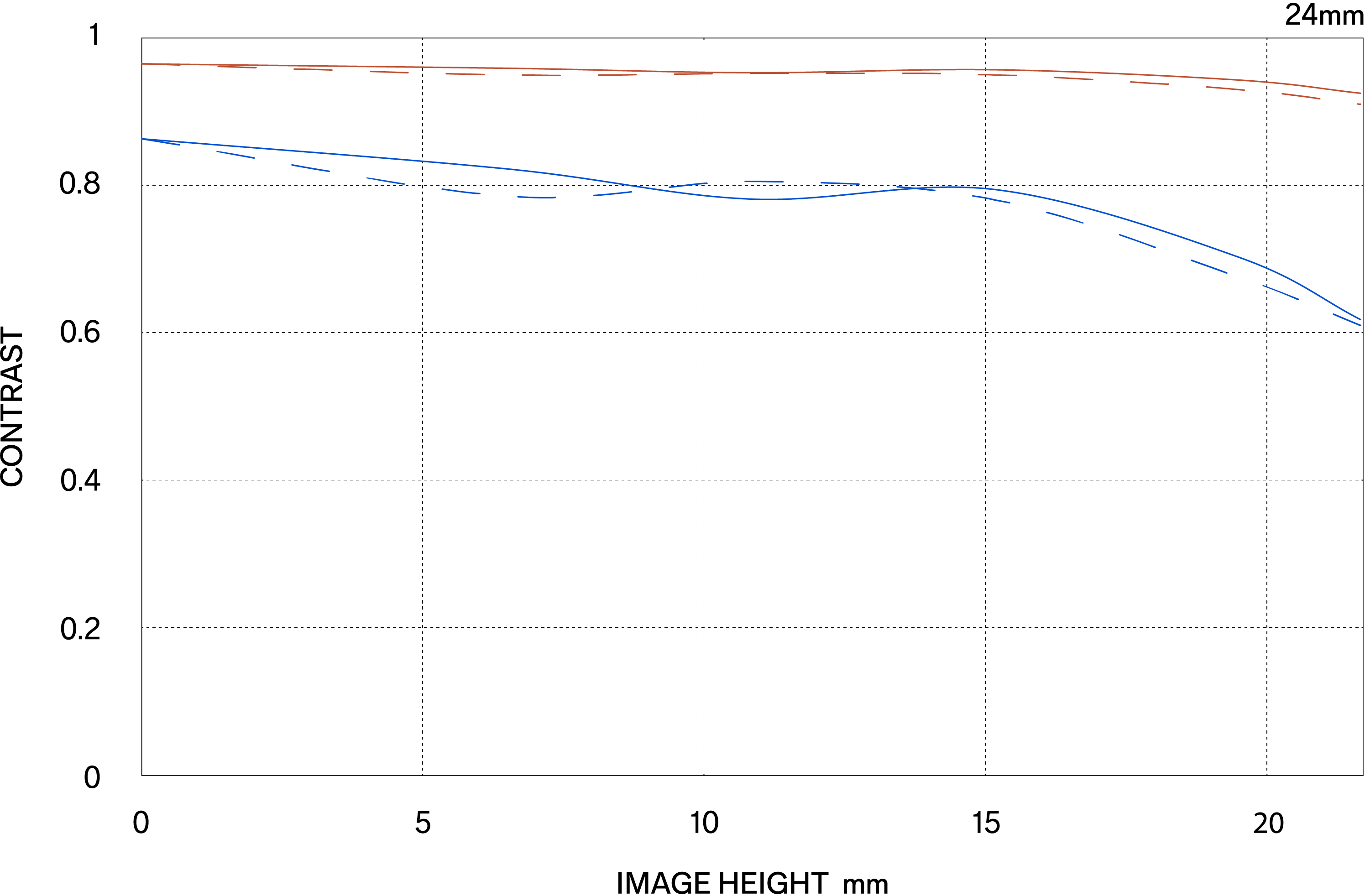

GEOMETRICAL MTF
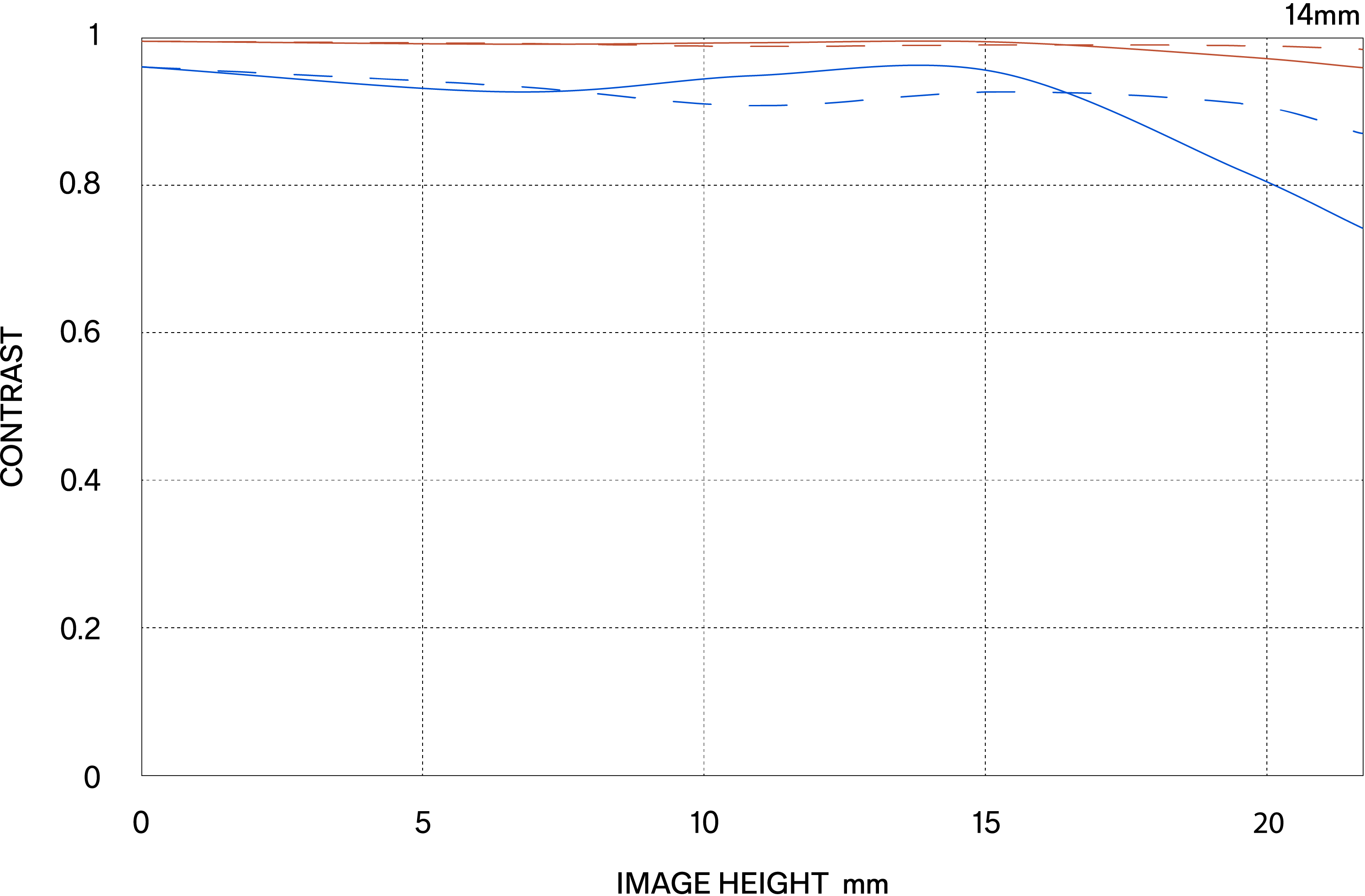

GEOMETRICAL MTF
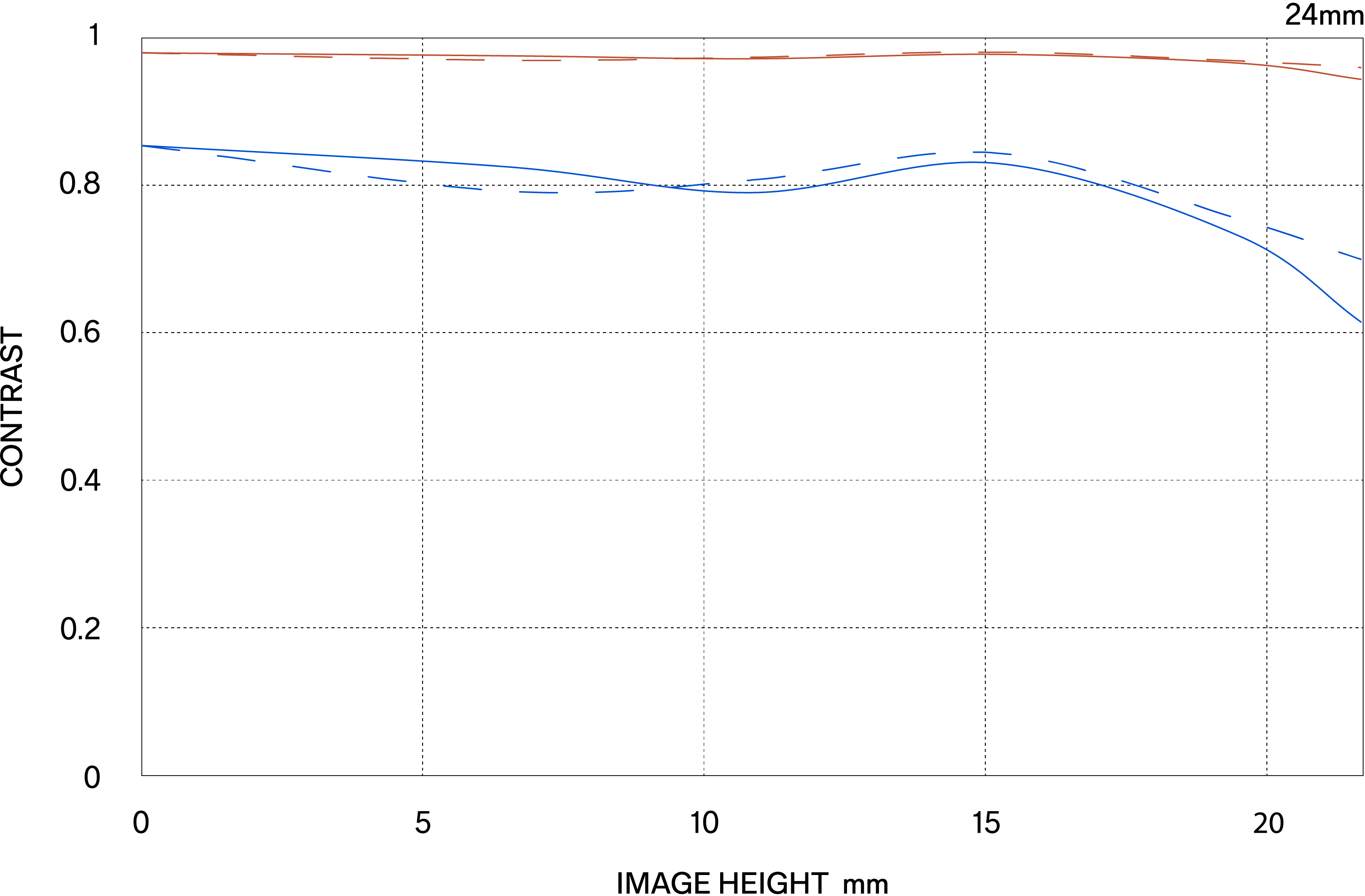

Dust and Splash Resistant Structure
This lens features a highly effective dust and splash resistant structure with special sealing at the mount connection, manual focus ring, zoom ring, and cover connection.
*Although this construction allows the lens to be used in light rain, it is not the same as being waterproof, so please prevent large amounts of water from splashing on the lens. It is often impractical to repair the internal mechanism, lens elements and electric components if they are damaged by water.
High-precision, rugged brass bayonet mount
The brass mount combines high precision with rugged construction. Its treated surfaces and enhanced strength contribute to the exceptional durability of the lens.
Water and oil repellent coating
Incorporates a water and oil-repellent coating that allows water to be wiped away easily and prevents oil and fat from sticking to the surface, even in challenging shooting conditions. At the same time, the maintenance of the lens surface becomes easier.
AFL button
the AFL button can be assigned with various functions widens the range of operations available on the lens.
Rounded diaphragm
The polygonal shape of a conventional iris dia phragm causes out-of-focus light points to appear polygonal. A rounded diaphragm is designed to pro duce rounded out-of-focus light points when opened to near maximum aperture. This creates attractive bokeh effects in many situations, such as when pho tographing a subject against an out-of-focus surface of water from which light is being reflected.
Nano Porous Coating
The super multi-layer coating is combined with SIGMA's unique coating technology "NPC (Nano Porous Coating)". The lens has been designed to be less susceptible to strong incident light such as backlight.
"NPC (Nano Porous Coating)" incorporates porous silica as the coating material. The porous silica layer has nano-sized holes with air inside. Having holes of this size enables a large reduction in the refractive index, allowing the reflectance to be lowered more than conventional anti-reflective coatings. As a result, reflected light causing flares and ghosting is sharply reduced, achieving clear image quality.
Exclusive low-dispersion glass
The degree to which light is refracted by glass depends on the light's wavelength. This fact causes different colors of light to focus at slightly different points. The result is chromatic aberration, the color fringing that is particularly noticeable in telephoto lenses. Most chromatic aberration can be removed by combining a high-refractivity convex lens element with a low-refractivity concave element. Yet residual chromatic aberration known as "secondary spectrum" may still remain. To minimize this secondary spectrum, which can be a serious issue with conventional lenses, SIGMA lenses feature up to three types of exclusive low-dispersion glass offering superior performance: ELD (Extraordinary Low Dispersion), SLD (Special Low Dispersion) and FLD ("F" Low Dispersion). In particular, FLD glass offers ultra-low dispersion in combination with high transmittance and the anomalous dispersion characteristics of fluorite. Meticulous deployment of these types of exclusive low-dispersion glass and optimization of power distribution gives SIGMA lenses superlative image rendition undiminished by residual chromatic aberration.
ULTIMATE LARGE-DIAMETER,
WIDE-ANGLE ZOOM LENS OPTIMIZED
FOR FULL-FRAME MIRRORLESS CAMERAS
−“THE DEFINITIVE LENS
FOR ASTROPHOTOGRAPHY”
WITH ASTONISHING RESOLUTION.
Many photographers like to use low sensitivity shooting to minimize noise as much as they can. Particularly in the photography of starry skies, bright wide-angle lenses are often selected because they can efficiently collect weak light. The 14-24mm F2.8 DG DN | Art has been developed as the ultimate large-diameter, wide-angle zoom lens by optimizing the standard specifications for photographing starry skies for full-frame mirrorless cameras. The uniform rendering performance and outstanding resolution to the edge of the frame make it the “definitive lens for astrophotography.” By utilizing the characteristics of the short flange focal length, this new-generation large-diameter zoom lens combines both compact body and unprecedented high-resolution image quality.
About Product Name:
Product name includes “DG” when the lens is designed to deliver the ultimate in performance on cameras with full-frame sensors, and “DN” when the lens design is optimized for mirrorless cameras with the short flange focal length.







